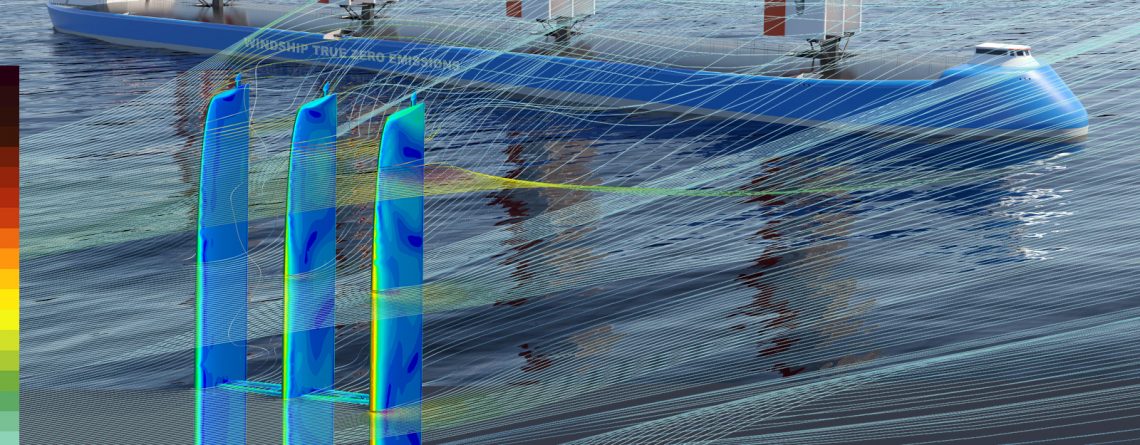Leading expert knowledge and CFD analysis
Due to their renowned experience and specialist technology, Cape Horn Engineering were commissioned to provide a holistic analysis of the Windship concept, Wind Propulsion Technology (WPT).
Dr.-Ing. Rodrigo Azcueta, Managing Director of Cape Horn Engineering is a leading CFD specialist, and marine engineering expert, recognised around the world for his work with shipbuilders, naval architects and yacht design teams.
He studied Naval Architecture and Marine Engineering in Buenos Aires and Hamburg, and following his graduation he continued working at the University of Hamburg on viscous free-surface flows and ship motions, for which he was conferred the degree of Doctor of Naval Engineering. His work as a research engineer at MTG Marinetechnik GmbH included projects for the German Ministry of Defence.
Later, as Head of hydrodynamic CFD for three America’s Cup Challenges, winning three consecutive Volvo Ocean Race Campaigns and as Head of CFD for a leading British America’s Cup Team, Azcueta has built his reputation upon a racing pedigree and winning formula over the last two decades.
He has since focused on building strong customer relations and has successfully expanded his business, extending the range of services, globally and across the broader maritime sector, with more recent ventures into the renewable energy sector. Investment in researching new technologies, dedicated to reducing shipping emissions and improving air pollution, is a strong commitment which has been made. Azcueta firmly believes the future will rely on sustainable energy sources and has a strong desire to contribute to this development and to improve the performance of renewable energy technologies.
“We have performed an extensive Computational Fluid Dynamic programme to improve the design and performance of the solid wings, as well as providing analytical evidence of potential savings.
Our CFD analysis gives understanding and also quantifies the link between the geometry of the wing and the driving force produced. Our studies provide accurate data of how the wings will perform in real conditions and how to improve the design. It is mainly based on the detailed analysis of the driving and side forces generated by each wing configuration. The other forces and moment generated by the airflow on the wings are also computed. By varying some shape and ratio parameters, such as the section’s profile, section’s thickness to chord ratio, main wing to flap chord ratio and wings separation, we can optimise the design to increase the performance.
A multitude of wing assembly shape configurations were analysed in varying wind conditions. In total, almost one thousand, high-fidelity CFD simulations were performed and analysed. The simulations were used to set up force models needed to describe the vessel’s hydrodynamic and aerodynamic behaviour. Operating conditions for the WPT devices were apparent wind angle and speed, wind shear and wind gradient (variation of wind speed and direction with height above the water surface), and angle of attack of the wings and its flaps.
These simulations were extremely valuable for improving the geometries of the wing assembly.
A significant gain in aerodynamic performance – a double digit percentage improvement was achieved by changing some parameters of the geometry.
Some selected simulation points were compared and validated with the wind tunnel testing, as well as with previous CFD analysis provided by Lloyds Register. Experts from the Wolfson Unit (University of Southampton) were also involved in the analysis of the CFD results. Extreme wind load cases were delivered to structural experts from Gurit for assuring optimum weight and safety of the structures.” comments Azcueta.

